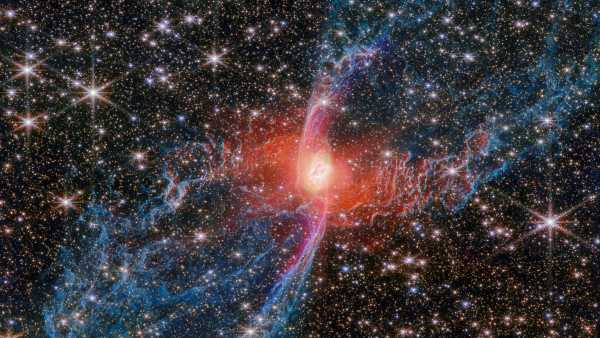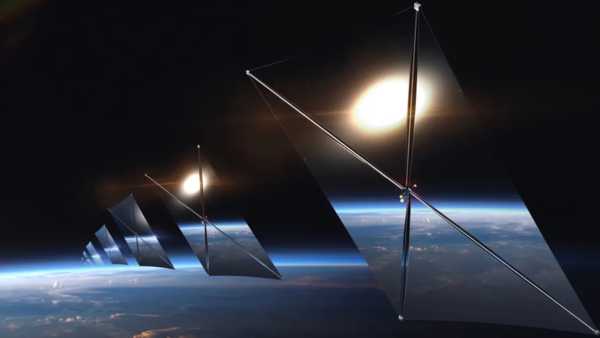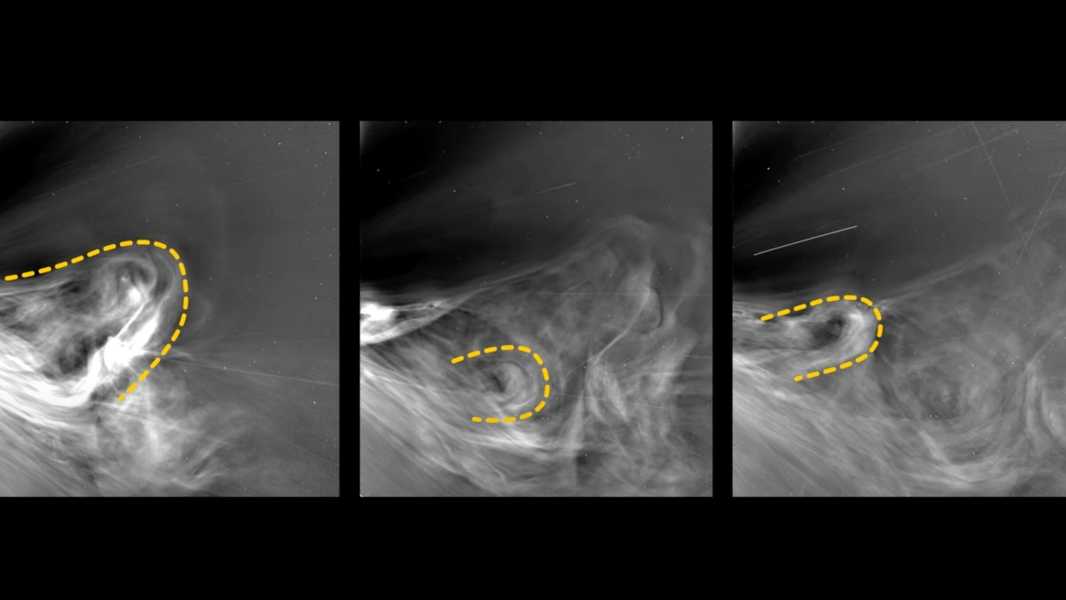
Three images from Parker Solar Probe's groundbreaking corona survey illustrate the formation of coronal mass ejections (yellow) — giant balls of plasma ejected by the sun into the solar system. (Image credit: NASA/Johns Hopkins APL/Naval Research Lab)
NASA has released the closest images ever taken by the Parker Solar Probe, taken just 6.1 million kilometers from the star's surface. The new images reveal key aspects of the solar wind, which could help scientists understand the origins of this mysterious space weather phenomenon and its impact on life on Earth.
The solar wind is a constant stream of charged particles, mostly protons and electrons, emitted by the sun’s outer atmosphere, known as the corona. This stream of matter moves through the solar system at more than a million miles per hour, interacting with magnetic fields and material ejected by the sun to create auroras, erode planetary atmospheres, and generate electrical currents that can disrupt power systems on Earth. Understanding and predicting this space weather is critical to protecting astronauts and spacecraft, and to reducing the disruption to infrastructure sometimes caused by high solar activity.
Launched in 2018, Parker Solar Probe became the first spacecraft to enter the solar corona. Equipped with a suite of scientific instruments, including the Solar Infrared Survey Radiograph (WISPR) and the Solar Wind Electron Alpha and Proton (SWEAP) detector, the unmanned spacecraft braves scorching heat and intense radiation to provide researchers on Earth with detailed information about the Sun and its immediate environment.
You may like
-
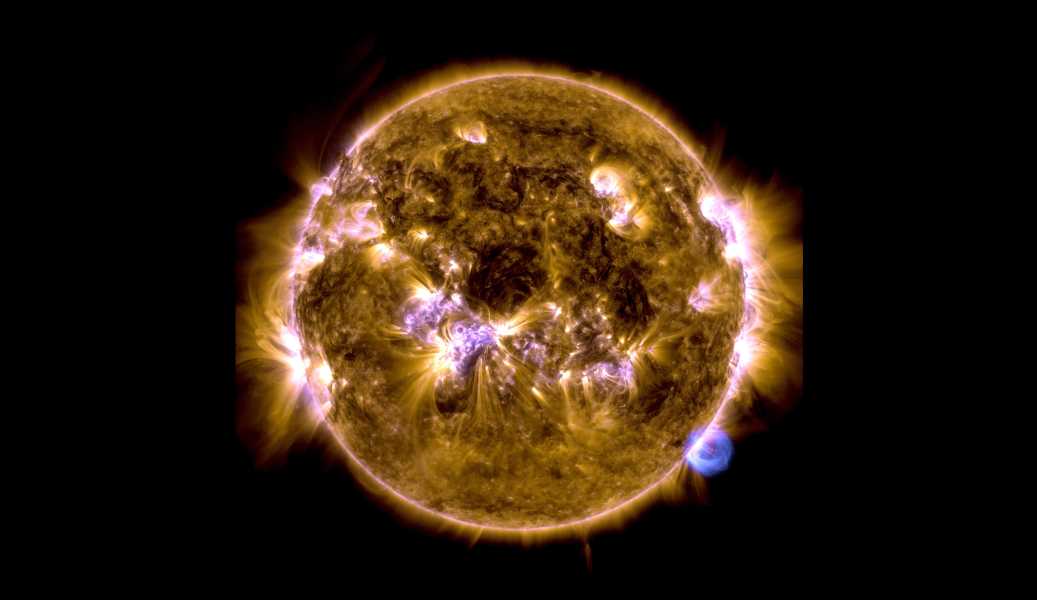
NASA's Parker Solar Probe has detected a powerful magnetic blast directed toward the surface of the Sun.
-
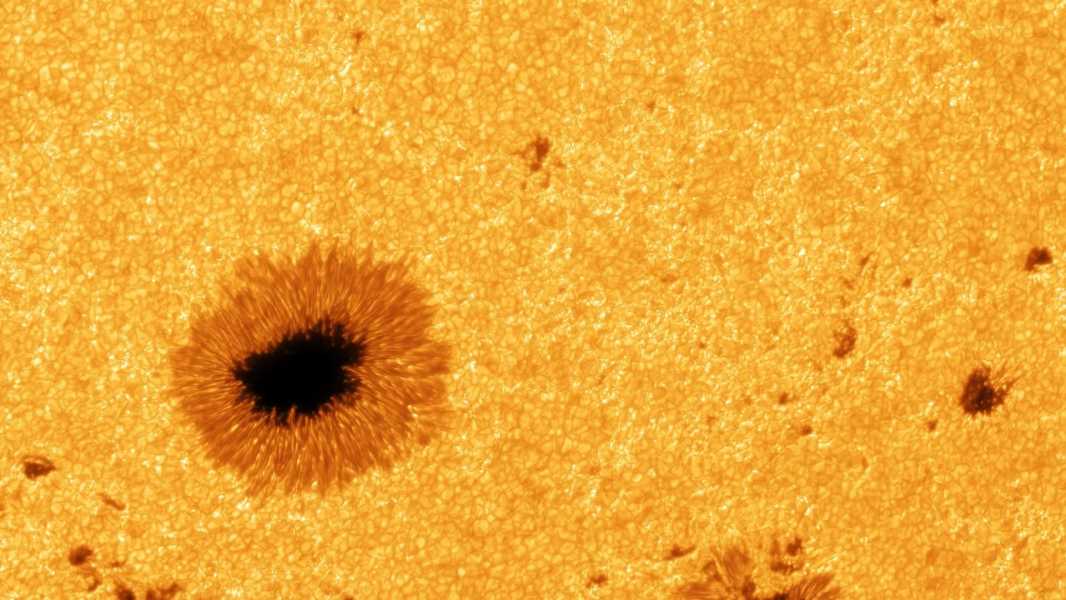
Sourse: www.livescience.com


